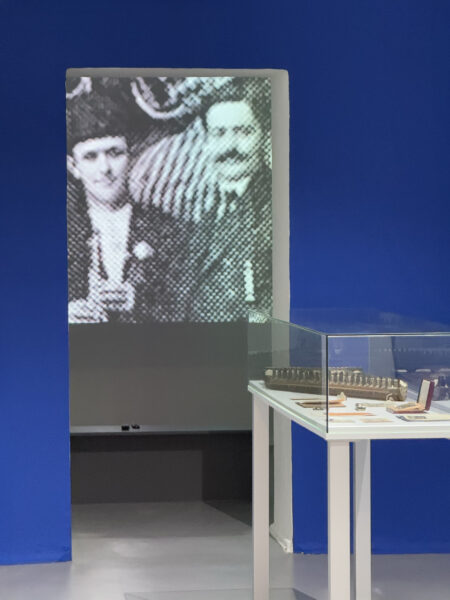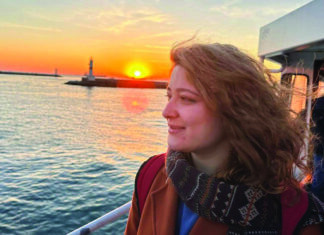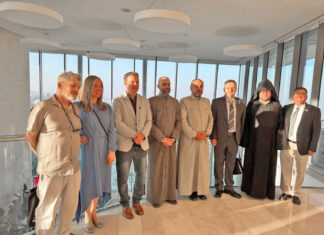BERLIN — There is no mystery behind the fact that Armenian art, especially in the diaspora, bears the imprint of the genocide: directly, as in representational figurative art or literature; obliquely, as in musical reflections; or symbolically, as in abstract conceptual impressions.
An exhibition that has just opened in Berlin features the works of an artist who explores all three modes of expression, in depth and beauty. Silvina Der Meguerditchian, born in Argentina where her grandparents had found a new home, has lived in Berlin since 1988. Her experience encompasses multiple language cultures and her art speaks in several genres, motivated by the quest for identity and intercultural harmony.
The current show, which opened on January 31 and runs until April 6, is hosted by the Kunstraum Kreuzberg/Bethanien. This “art exhibition space” in the Berlin district of Kreuzberg is a former hospital now dedicated to contemporary artistic and cultural exhibitions.
Curators of the exhibition entitled, “Those Who Take Care of Us,” are Barbara Höffer and Lusin Reinsch.
The exhibition, which unfolds in thirteen interconnected rooms, displays many new creations of the prize-winning artist and is her most comprehensive show thus far. It is organized in three themes, Resonances, Memory, and Care.
The first features music, that of the kanun, presented through installations, videos, and the instrument itself to be seen and heard, not only in the Armenian context but internationally. It is as if the kanun, itself, migrates and spreads its melodies. Enormous hanging collages composed of personal items, photographs, and traditional textiles recall personal and collective past experiences, expulsion from the homeland, migration, loss, and new interrelationships.










